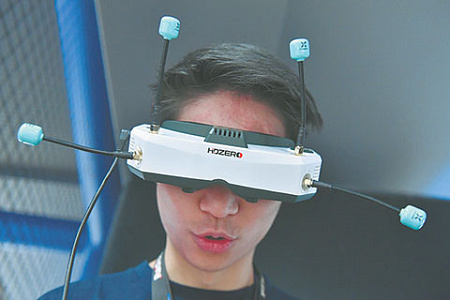
A quiet but rapidly expanding movement, rooted in faith but resonating globally, is challenging the pervasive dominance of digital technology in the lives of children and adolescents. The ‘Smart Families’ initiative, originating within Catholic communities, advocates for a more conscious and healthy engagement with screens, urging parents to delay smartphone adoption and social media use for their children amidst growing concerns over mental health and development.
The campaign, now collaborating with over 120 schools worldwide, champions the belief that fostering communities focused on ‘healthy, mindful’ technology interaction is crucial for respecting ‘innate human dignity.’ Its genesis traces back less than two years to Houston, Texas, where Catholic couple Brian and Jennifer Kuzma embarked on a personal experiment: a family digital detox. Temporarily removing smartphones and tablets, even for themselves, yielded immediate, transformative results. Within a week, their children were observed engaging more with books, outdoor activities, and interpersonal communication, fostering new traditions like nightly family discussions.
Inspired by this success, the Kuzmas extended the experiment to their eldest son’s school, implementing a ban on smartphones during class hours. The initiative led to a significant improvement in academic performance among participating students. This localized success quickly caught broader attention, spreading to other schools within the state and eventually piquing interest across the Atlantic in the United Kingdom.
Today, Smart Families has evolved into a comprehensive pedagogical program. It equips parents and schools with educational materials, expert lectures, workshops for children, and psychological support. The initiative employs a dedicated team supplemented by consultants, doctors, and mental health specialists. Brian Kuzma attests to an overwhelming demand for their program from parents and principals of Catholic schools, underscoreing a widespread anxiety about digital dependency.
While spearheaded by a Catholic couple, the ‘Smart Families’ pledge is open to anyone, regardless of faith. An online ‘Smart Promise’ asks parents to commit to delaying their child’s smartphone access until high school. This commitment doesn’t advocate a complete avoidance of technology, but rather a purposeful engagement, limiting use to necessities like education or work, and restricting children’s phones to communication without internet access.
For adolescents aged 10-14, the program offers a three-year lecture series. The curriculum covers foundational neuroscience, exploring brain development and human behavior, before delving into technology’s societal impact. The final year focuses on digital literacy and cybersecurity, aiming to equip teenagers with a critical understanding of digital pitfalls before they fully immerse themselves in the smartphone world.
These grassroots efforts align with accumulating research findings on the impact of early and excessive digital exposure. A 2025 Common Sense Media study, ‘The Common Sense Census: Media Use by Kids Ages Zero to Eight,’ revealed that 40% of two-year-olds in the US own a tablet, rising to 58% by age four. By eight, nearly a quarter possess their own mobile phone, with 51% of children aged eight and under owning a personal mobile device. Disconcertingly, the study found children from lower-income families spend nearly twice as much time on mobile screens as their high-income counterparts (3.48 vs. 1.52 hours daily). Furthermore, almost one-third of parents reported their child uses Artificial Intelligence for schoolwork, highlighting the rapid integration of advanced tech into children’s lives.
Further compounding these concerns, a Financial Times report last September suggested that modern teenagers, often raised with smartphones in hand, exhibit higher levels of anxiety and social withdrawal compared to their gadget-free predecessors. This sentiment is echoed by social psychologist Jonathan Haidt, whose 2024 book, ‘The Anxious Generation,’ attributes a sharp global rise in adolescent depression, anxiety, self-harm, and suicides since the early 2010s directly to smartphone proliferation. Haidt’s work emphasizes the critical importance of play and independent exploration for healthy development, also noting differential impacts: social media poses greater risks for girls, while boys are more prone to retreat into virtual worlds, with potentially catastrophic consequences.
The global consciousness around this issue is translating into legislative action. In late 2024, Australia passed a groundbreaking law, the first of its kind, prohibiting social media use for children under 16. This move received support from the Australian Catholic Bishops’ Conference, whose earlier appeals for age verification focused not only on mental well-being but also on protecting youth from ‘harmful content.’
Starting this October, Greece has followed suit, banning social media for under-16s and restricting access to adult content, gambling, alcohol, tobacco, and dating sites for under-18s. While Australia relies on identity verification, Greece’s initial model does not mandate age confirmation. However, plans are underway to integrate a ‘Children’s Wallet’ app, currently blocking undesirable applications, into digital identity documents by late 2026, making Greece the first EU nation to implement such a national measure. Similar discussions are reportedly active in France, Spain, and Germany.
Beyond policy, innovative, albeit unconventional, solutions are emerging. Earlier this year in the US, the ‘Methaphone’ was introduced – a transparent, smartphone-shaped piece of glass designed to alleviate ‘phone anxiety.’ Priced at $19-25, it allows users to mimic social media scrolling, with some purchasers claiming it helps them focus on reading physical books, highlighting the subconscious cravings associated with digital devices.
Yet, as societies grapple with current digital challenges, the horizon presents even greater complexities. Experts from leading IT corporations recently suggested a future where traditional smartphones might be obsolete, replaced by augmented reality glasses or virtual reality headsets. For ‘smart families,’ this shift implies confronting an even more immersive and potentially challenging digital landscape, demanding continuous adaptation in the quest for balanced living in a hyper-connected world.
